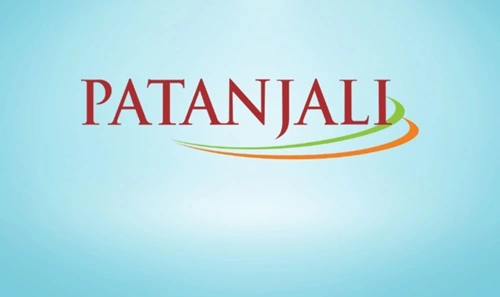Patanjali Ayurved, co-founded in 2006 by Baba Ramdev and Acharya Balkrishna, has emerged as one of India’s most successful homegrown FMCG (Fast-Moving Consumer Goods) brands. With a focus on promoting Ayurveda and natural products, Patanjali has disrupted the Indian FMCG landscape by offering a wide range of affordable and indigenous products. This article explores the Patanjali business model, its revenue streams, and how it has successfully positioned itself as a leader in the health, wellness, and FMCG markets.
Overview of Patanjali’s Business Model

Patanjali operates on a vertically integrated FMCG business model, producing, marketing, and selling a diverse range of products while maintaining control over its supply chain. The company’s strategy revolves around:
- Ayurveda-Based Products: Offering natural and herbal alternatives to synthetic FMCG products.
- Diverse Product Portfolio: Catering to categories like food, beverages, personal care, health supplements, home care, and clothing.
- Affordable Pricing: Selling products at competitive prices, making them accessible to the masses.
- Self-Reliance and Indigenous Production: Emphasizing “Make in India” and sourcing locally to support Indian farmers and small businesses.
Patanjali combines its strong brand ethos with an extensive distribution network to maximize reach across rural and urban markets.
Revenue Streams
Patanjali earns money through various revenue channels, each contributing to its success in the FMCG market:
a) FMCG and Consumer Products
The sale of FMCG products is Patanjali’s primary revenue driver. Its product portfolio includes:
- Food and Beverages: Honey, ghee, biscuits, atta, juices, and spices.
- Personal Care: Toothpaste, shampoos, soaps, and skincare products.
- Health Supplements: Chyawanprash, ashwagandha tablets, and ayurvedic tonics.
- Home Care: Detergents, floor cleaners, and dishwashing liquids.
Revenue Generation:
- Direct sales through retail outlets, e-commerce platforms, and distributors.
- High volume sales due to affordability and wide availability.
b) Ayurvedic Medicines
Patanjali’s roots in Ayurveda have driven its success in the health and wellness segment. The company offers:
- Herbal and Ayurvedic medicines for ailments like diabetes, hypertension, and digestion.
- General wellness products, such as herbal teas and immunity boosters.
Revenue Generation:
- Selling through dedicated Patanjali Chikitsalayas (clinics) and Ayurvedic centers.
- Growing demand for alternative medicine, particularly post-pandemic, has boosted this revenue stream.
c) E-Commerce and Online Sales
Patanjali sells its products directly through its website and via partnerships with e-commerce platforms like Amazon, Flipkart, and BigBasket. Online sales contribute significantly to revenue, especially in Tier 2 and Tier 3 cities.
Revenue Generation:
- Online sales eliminate intermediaries, improving margins.
- Increased sales during festivals and promotional campaigns.
d) Patanjali Mega Stores and Franchise Outlets
Patanjali operates thousands of retail outlets, including:
- Exclusive Patanjali stores.
- Franchise-operated Patanjali Chikitsalayas.
- Supermarkets and hypermarkets.
Revenue Generation:
- Franchise fees from franchisees.
- Sales at exclusive stores and supermarkets.
e) Textile and Apparel
Through its Patanjali Paridhan brand, the company sells traditional and contemporary clothing, including:
- Yoga wear.
- Ethnic clothing.
- Accessories like shoes and belts.
Revenue Generation:
- Direct sales through Patanjali Paridhan outlets and online platforms.
- Seasonal sales and festive collections attract higher revenue.
f) Natural Farming and Agro-Products
Patanjali’s emphasis on promoting organic and natural farming extends to products like:
- Organic grains and pulses.
- Natural fertilizers and seeds.
- Dairy products under the Patanjali Gaushala initiative.
Revenue Generation:
- Sales of agro-products through retail and distribution networks.
- Support from government initiatives for organic farming.
g) Patanjali Wellness Centers
Patanjali also earns revenue through its wellness and healthcare services, which include:
- Yoga camps and workshops.
- Panchakarma and naturopathy treatment centers.
- Ayurveda-based consultations and therapies.
Revenue Generation:
- Fees from consultations and wellness services.
- Donations during yoga camps led by Baba Ramdev.
h) Partnerships and Exports
Patanjali has expanded globally by exporting its products to countries like the US, UK, Canada, and the UAE. It has also partnered with retail giants and government initiatives to expand its reach.
Revenue Generation:
- Export revenue from international markets.
- Institutional partnerships with Indian Railways and other organizations for product distribution.
Cost Structure
Patanjali’s cost structure focuses on maintaining affordability while ensuring product quality:
a) Raw Materials
Patanjali sources ingredients like herbs, grains, and milk directly from farmers, reducing procurement costs.
b) Manufacturing
The company operates state-of-the-art manufacturing units, minimizing production costs through economies of scale.
c) Marketing and Branding
Patanjali relies on low-cost but high-impact marketing, with Baba Ramdev as the brand’s face. Social media campaigns, TV advertisements, and yoga events promote its products effectively.
d) Distribution and Logistics
Maintaining a vast network of distributors, warehouses, and retail outlets involves significant logistical expenses.
e) Research and Development
Investments in R&D ensure innovation in Ayurvedic and natural products, helping Patanjali stay competitive.
Unique Features Driving Revenue Growth
a) Affordability
Patanjali’s products are priced lower than competitors, making them accessible to price-sensitive consumers.
b) Trust in Ayurveda
The brand leverages India’s cultural and historical association with Ayurveda to build trust and loyalty among consumers.
c) Strong Rural Presence
Patanjali has penetrated rural markets effectively, where natural and herbal products are highly sought after.
d) Diversified Portfolio
The company’s extensive product range ensures revenue streams from multiple segments.
e) Sustainable Practices
Patanjali emphasizes sustainable agriculture and eco-friendly production, aligning with the growing demand for green products.
Challenges and Opportunities
Challenges
- Intense Competition: Established FMCG brands like HUL, Nestlé, and Dabur compete in similar segments.
- Quality Concerns: Reports of quality issues in certain products have raised questions about brand reputation.
- Operational Scalability: Managing a vast product portfolio and distribution network poses logistical challenges.
Opportunities
- Global Expansion: Rising demand for natural and Ayurvedic products offers growth opportunities in international markets.
- Health and Wellness Boom: Increased awareness of healthy living post-pandemic can boost sales of Patanjali’s wellness products.
- Digital Transformation: Enhanced online presence can drive sales, particularly in untapped markets.
Financial Overview
Patanjali has consistently reported robust financial growth, driven by strong demand across its FMCG and healthcare segments. The company’s diversified revenue streams and strategic pricing have enabled it to compete with multinational giants while maintaining profitability.
Conclusion
Patanjali’s business model is a blend of traditional wisdom and modern business practices. By leveraging Ayurveda, affordability, and a diverse product range, the company has established itself as a dominant player in India’s FMCG sector. With opportunities in global markets and wellness trends, Patanjali is well-positioned to sustain its growth and expand its influence in the years to come.

